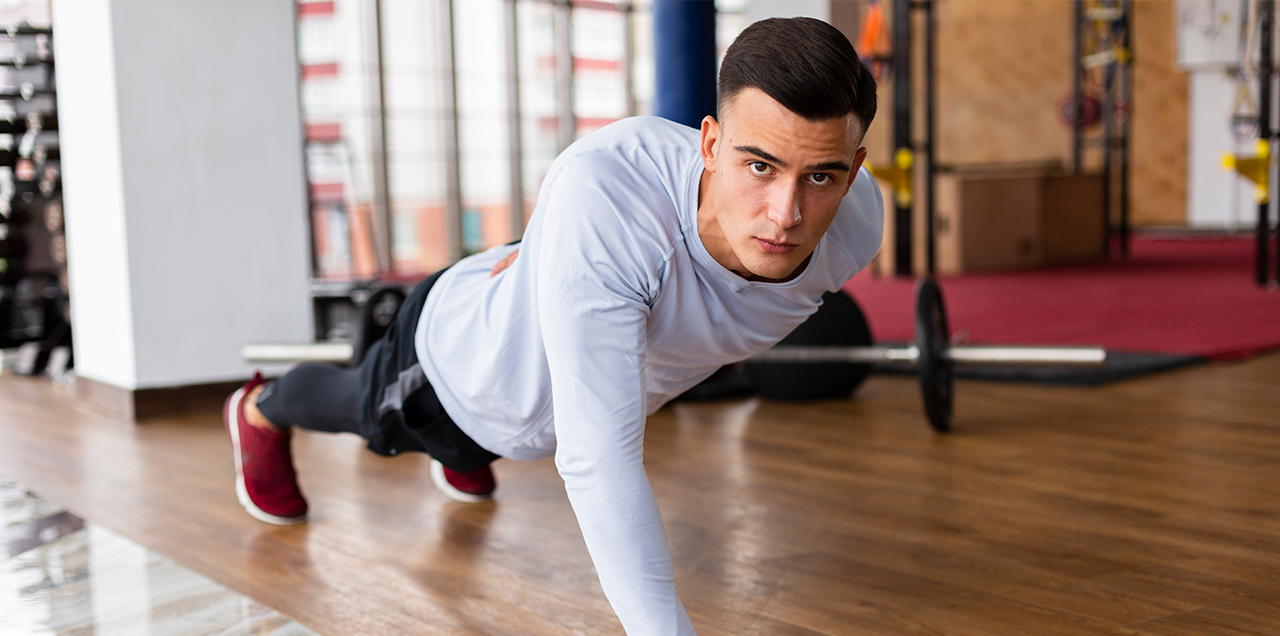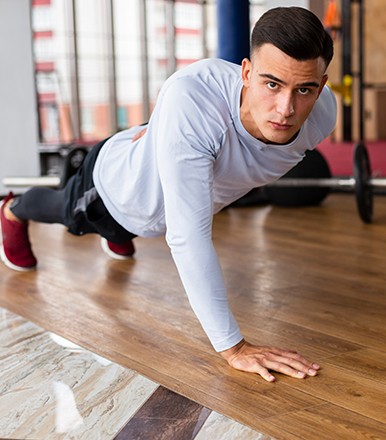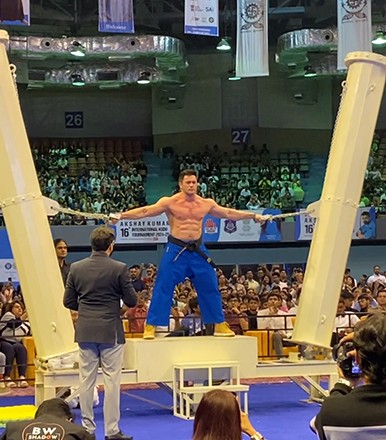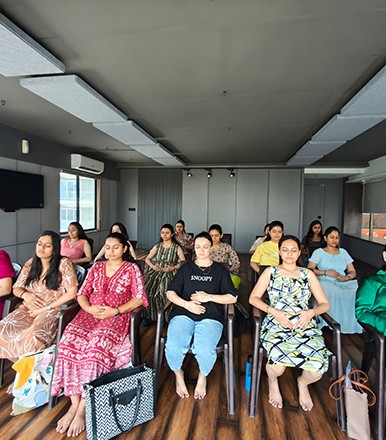Have you ever witnessed a shredded athlete on your social feeds defying gravity on a pull-up bar? Moving in a way you didn’t even know was humanly possible? If yes, then you have already had your first encounter with Callisthenics.
At first glance, callisthenics appears and sounds like a flashy, modern trend built for social media and today’s youth. But that is not true. Instead, callisthenics is a classical form of body weight exercise that has stood the test of time. You would be surprised to know that the history of this form of exercise dates back to Ancient Greece.
So, what exactly is callisthenics, and why is it worth including in your daily routine? Let’s explore.
What is Callisthenics?

“Callisthenics is a form of fitness which utilises gravity and body weight leverage to challenge your fitness level,” says Kenneth Gallarzo, a world-renowned Callisthenics coach and the founder of Systematic Callisthenics.
From the definition provided by Gallarzo, we can understand that callisthenics is a form of strength training that doesn’t require weight lifting. Instead, this regime requires you to utilise your body weight as resistance to perform exercises. This form of workout focuses more on multi-joint, compound movements and typically requires little to no equipment, making it accessible and versatile.
To further understand the meaning of this regime, one can simply look at the origin of the word callisthenics. It comprises two Greek words: kállos (beauty) and sthenos (strength), emphasising the harmony of physical strength and graceful movement. Hence, it is safe to say that callisthenics is not just about raw power but also about mastering control, balance, and fluidity in movement.
Unlike traditional weight training, which often isolates specific muscle groups, callisthenics engages multiple muscles and improves overall functional strength and coordination. Whether it's push-ups, pull-ups, dips, or more advanced moves like the human flag, this training method builds strength in a way that translates directly to real-world movements.
History of Callisthenics
Callisthenics' roots run deep, all the way back to the ancient battlefields. What may seem like a contemporary fitness trend, which people often even term street workout, has helped shape warriors, monks, and everyday individuals across different cultures.
Ancient Beginnings
The oldest account of callisthenics can be found in Ancient Greece (600 BCE - 300 BCE) when it was a key part of military training. Sources suggest that the Spartans and Alexander the Great's armies relied on these bodyweight workout regimes to build strength, endurance, and agility.
Simultaneously, the workout found another use by the Han dynasty physicians in Ancient China (500 BCE—200 CE). The fitness regime was prescribed by the physicians of that time for overall body well-being. Shaolin warriors also integrated it into their training regime, which helped them develop extraordinary strength, agility, and flexibility—essential traits for both self-defense and spiritual discipline.
19th Century Renaissance
The 19th century saw the revival of callisthenics as it found its place in structured education systems, particularly in Europe and America. Friedrich Ludwig Jahn, who is also known as the father of gymnastics, promoted callisthenics in American societies through the Turner movement. This movement later influenced schools, where bodyweight exercises were introduced as the foundation of physical education programs.
The Modern Revival
While callisthenics never truly disappeared, it saw a major resurgence in the 20th and 21st centuries. The rise of urban fitness movements, like "Street Workout," brought advanced techniques such as muscle-ups, human flags, and planches into the spotlight. Social media further fueled its popularity, with athletes showcasing their incredible feats, inspiring millions worldwide.
Why Callisthenics works for everyone?
Whether you’ve never done a single push-up in your life or you can pack a weight rack at the gym, callisthenics has something to offer for everyone. It can elevate your journey in unique and powerful ways. Here’s how:
For beginners
One of the biggest frictions for people starting their fitness journey is going to the gym or buying equipment that they won’t use after a certain time. But what if I tell you that callisthenics doesn’t require either of those?
No equipment
Yes, you can start your callisthenics journey anywhere: in your living room, in a park, or even in your workplace (not recommended). This is the beauty of callisthenics: You don’t need to have a machine or heavy weight to get started; just the will to get fit will suffice.
Builds foundational strength
This fitness regime focuses on movements like push-ups, squats, and planks, training multiple muscle groups together. Eventually, it will help you develop real-world or, in professional terms, foundational strength.
Improved mobility and flexibility
For people who seldom engage in physical activities, bodyweight movements will naturally increase joint mobility and flexibility over time. Once your lazy bones get accustomed to the exercise, it will automatically reduce the risk of injury and enhance your daily life.
Boosts Confidence
In a fitness journey, it’s all about small steps—the first pull-up, the first one-minute plank hold. These small achievements can make a world of difference to your confidence and motivate you to keep trying to achieve bigger and better feats.
For Weightlifters
Now, for those who have already mastered the pull-ups and can hold a plank for more than 1 minute, it might be puzzling how callisthenics can add to their workout regime. Well, that’s the beauty of this workout—it has something for everyone.
Enhance body control and awareness
A 100 kg bench press or a deadlift of even more weight might help you build raw strength, which is excellent. But it is through callisthenics that you improve your neuromuscular coordination, which helps your body move with control, precision, and balance.
Targets Stabilizer muscles
Smaller muscle groups are often ignored during strength workouts, like children in the house. Hence, moves like dips, L-sits, and handstands fire up those small groups to improve overall muscle balance and function.
Breaking Plateaus
Working out in the same manner, week in and week out, can cause plateaus: a stage where progress in strength, muscle growth, or performance stalls despite consistent training efforts. This happens when your body gets accustomed to your workout regime.
Hence, switching up your routine by adding bodyweight progressions can shock your system and even stimulate new muscle growth, eventually helping you break free of bodybuilding plateaus.
Callisthenics isn’t just an entry point for beginners or a “bodyweight-only” alternative to the gym. It’s a complete and complementary training system that scales to your current fitness level, challenges your entire body, and delivers results far beyond aesthetics.
Whether you’re starting fresh or adding depth to your current regimen, callisthenics is a tool that belongs in everyone’s fitness toolbox.
Check out Hello Fitness Magazine. There is never a wrong time to go on a fitness quest. Contact us and allow us to assist you in leading a better lifestyle. Follow us on Instagram. We share the best Health & Fitness related Articles for information based on healthy eating, health and fitness recommendations,














